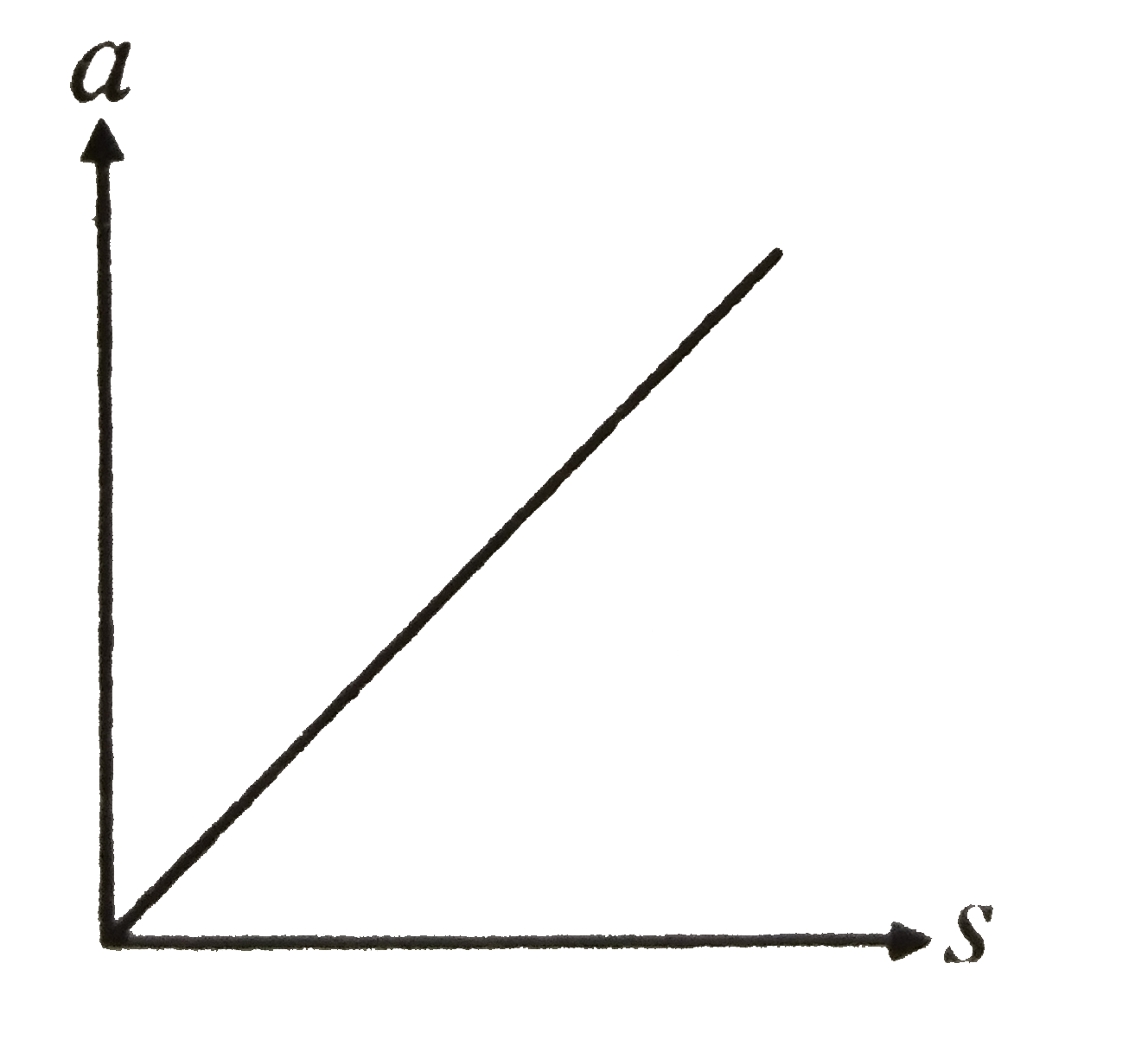The velocity of a particle performing motion with uniform acceleration on a linear path, at position 'x' is 'v' and v=√196−16x, where x is in metre. What would be the acceleration of this particle? Take initial velocity of particle = 14 ms−1Solution in Gujrati
a=−8ms−2
Topper's Solved these Questions
- MOTION BOOK - KUMAR PRAKASHANCHAPTER - MOTION EXERCISE - FILL IN THE BLANKS
50 Videos
- MOTION BOOK - KUMAR PRAKASHANCHAPTER - MOTION EXERCISE - TEXTBOOK EXAMPLES/NUMERICALS
14 Videos
- GRAVITATIONBOOK - KUMAR PRAKASHANCHAPTER - GRAVITATIONEXERCISE - ACTIVITY 10.4
2 Videos
- QUESTION PAPER 01BOOK - KUMAR PRAKASHANCHAPTER - QUESTION PAPER 01EXERCISE - SECTION - D
5 Videos
Similar Questions
A car moving with constant speed of 72 km h 1 is said to be moving at ......... ms−1.
View SolutionAn object travels 16 m in 4s and then another 16 m in 2 s. What is the average speed of the object?
View SolutionTake an empty plastic bottle . Close the mouth of the bottle with an airtight stopper . Put it in a bucket filled with watere . The bottle floats .
Push the bottle into the water. You feel an upward push. Try to push it further down. You will find it difficult to push deeper and deeper. Water exerts a force on the bottle in upward direction. Now release the bottle. It bounces back to the surface.
Does the force due to the gravitational attraction of the earth act on this bottle? If so, why doesn't the bottle stay immersed in water after it is released ?
View SolutionThe mass of a car is 1200 kg. It comes to rest due to retardation of 2ms−2 .
What would be the force (frictional force) acting between the car and road ?
View SolutionA particle is performing a linear simple harmonic motion. If the instantaneous acceleration and velocity of the particle are a and v respectively, identify the graph which correctly represents the relation between a and v .
View SolutionIf the velocity of a particle is given by v=(180−16x)12ms, then its acceleration will be
View SolutionAcceleration (a)-displacement(s) graph of a particle moving in a straight line is shown here. The initial velocity of the particle is zero. The v-s graph of the particle would be

View SolutionThe velocity of a particle moving on the x-axis is given by v=x2+x, where x is in m and v in m/s. What is its position (in m) when its acceleration is 30m/s2.
View SolutionAcceleration of a particle is given by
a=1/V
Where V is the velocity . Find
(i) Velocity of particle at time t, given that v = 10 m/s at t = 0.
(ii) Velocity of particle when its position is x, given that speed is 3 m/s at x = 0.
View SolutionThe velocity time relation of a particle is given by v = (3t^(2) -2t-1) m//s Calculate the position and acceleration of the particle when velocity of the particle is zero . Given the initial position of the particle is 5m .
View SolutionThe acceleration (a) and the velocity of a particle in rectilinear motion are related as a = -sqrt(v) . Then
View SolutionA particle moving with uniform acceleration has its final velocity (v=√150+8x) m/s where x is the distance travelled by the body. Then the acceleration is
View SolutionA particle is performing a linear simple harmonic motion. If the acceleration and the corresponding velocity of the particle are a and v respectively, which of the following graphs is correct?
View SolutionIf velocity of the particle is given by V=√x where 'x' denotes the position of the particle. And initially particle was at x=4, then which of the following are correct
View SolutionThe velocity of a particle performing motion with uniform acceleration on a linear path, at position 'x' is 'v' and v=√196−16x, where x is in metre. What would be the acceleration of this particle? Take initial velocity of particle = 14 ms−1
View SolutionA particle is performing a linear simple harmonic motion. If the instantaneous acceleration and velocity of the particle are a and v respectively, identify the graph which correctly represents the relation between a and v .
View Solution
